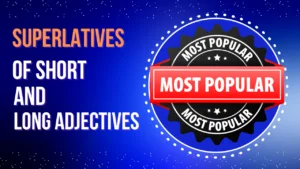
Introduction
The near future (be going to+verb) is used with future plans and spontaneous decisions that we make at the time of speaking. It is also used to make predictions about the future. To put a verb in the near future, we use am, is, or are (present simple of to be) followed by going to+verb.
The following table has more details about this tense. Take a look at it.
Basic notes about the future with be going to +verb
| FORM | – Formation rule: subject+am/are/is+going to+verb – Affirmative/Positive: I am going to have/tell ✔We/You/They are going to have ✔ He/She/It is going to have – Negative: I am not going to have/tell ✔ We/You/They are not going to have/tell ✔He/She/It is not going to have/tell – Interrogative: Am I going to have/tell? ✔Are we/you/they going to have/tell? ✔Is he/she/it going to have/tell? |
| USE/FUNCTION | 1. Planned actions 2. Predictions with physical evidence 3. Actions taking place in the near future |
| EXAMPLES | 1. We are going to have the final exams next June. 2. Look! The baby is going to fall off the balcony. 3. The train is going to leave in thirty minutes. |
| SIGNAL WORDS | – Next + expression of time – Look! ……. – At/on/in + time expression |
Exercise
Give the future tense of the verbs between parentheses using ‘ going to’ (affirmative, negative, and interrogative)
- I tell them I (come).
- The plane ( take off).
- He( agree).
- I know he (make it).
- You( talk) to strangers.
- We ( be) there around five.
- She( turn) him down.
- He( become) Prime Minister.
- They (mee in front of the church.
- You ( like) this.
- The temperature (fall) .
- The train (leave).
- She (obey) his order.
- They(call).
- The plane (fly) over the Pacific.
- He (cancel) the meeting.
- They (break off) the agreement.
- He (die) rich .
- They (send) a mail after they have a rest.
- Hurry up the film (start).






